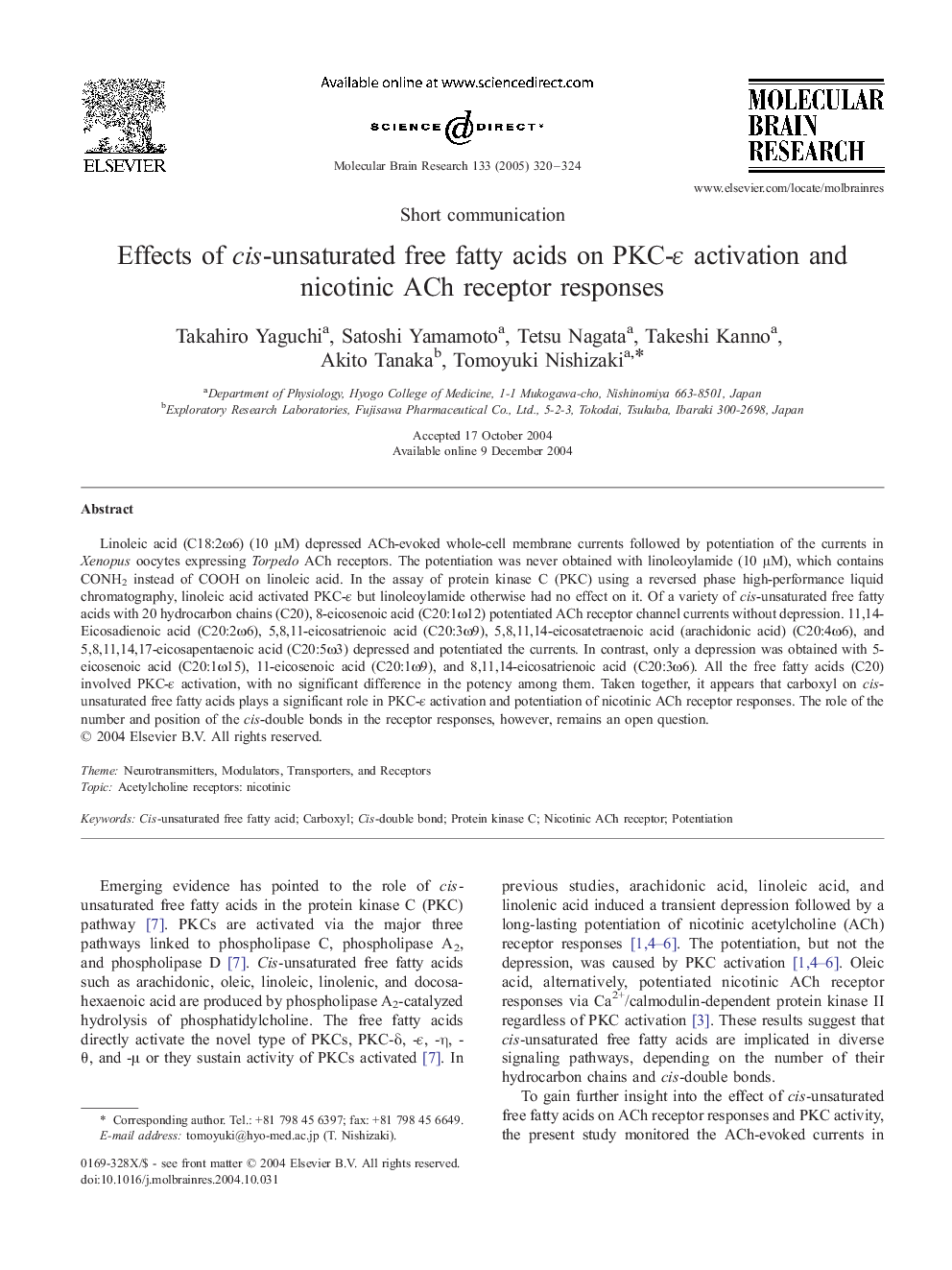| Article ID | Journal | Published Year | Pages | File Type |
|---|---|---|---|---|
| 9410808 | Molecular Brain Research | 2005 | 5 Pages |
Abstract
Linoleic acid (C18:2Ï6) (10 μM) depressed ACh-evoked whole-cell membrane currents followed by potentiation of the currents in Xenopus oocytes expressing Torpedo ACh receptors. The potentiation was never obtained with linoleoylamide (10 μM), which contains CONH2 instead of COOH on linoleic acid. In the assay of protein kinase C (PKC) using a reversed phase high-performance liquid chromatography, linoleic acid activated PKC-ε but linoleoylamide otherwise had no effect on it. Of a variety of cis-unsaturated free fatty acids with 20 hydrocarbon chains (C20), 8-eicosenoic acid (C20:1Ï12) potentiated ACh receptor channel currents without depression. 11,14-Eicosadienoic acid (C20:2Ï6), 5,8,11-eicosatrienoic acid (C20:3Ï9), 5,8,11,14-eicosatetraenoic acid (arachidonic acid) (C20:4Ï6), and 5,8,11,14,17-eicosapentaenoic acid (C20:5Ï3) depressed and potentiated the currents. In contrast, only a depression was obtained with 5-eicosenoic acid (C20:1Ï15), 11-eicosenoic acid (C20:1Ï9), and 8,11,14-eicosatrienoic acid (C20:3Ï6). All the free fatty acids (C20) involved PKC-ε activation, with no significant difference in the potency among them. Taken together, it appears that carboxyl on cis-unsaturated free fatty acids plays a significant role in PKC-ε activation and potentiation of nicotinic ACh receptor responses. The role of the number and position of the cis-double bonds in the receptor responses, however, remains an open question.
Keywords
Related Topics
Life Sciences
Neuroscience
Cellular and Molecular Neuroscience
Authors
Takahiro Yaguchi, Satoshi Yamamoto, Tetsu Nagata, Takeshi Kanno, Akito Tanaka, Tomoyuki Nishizaki,
